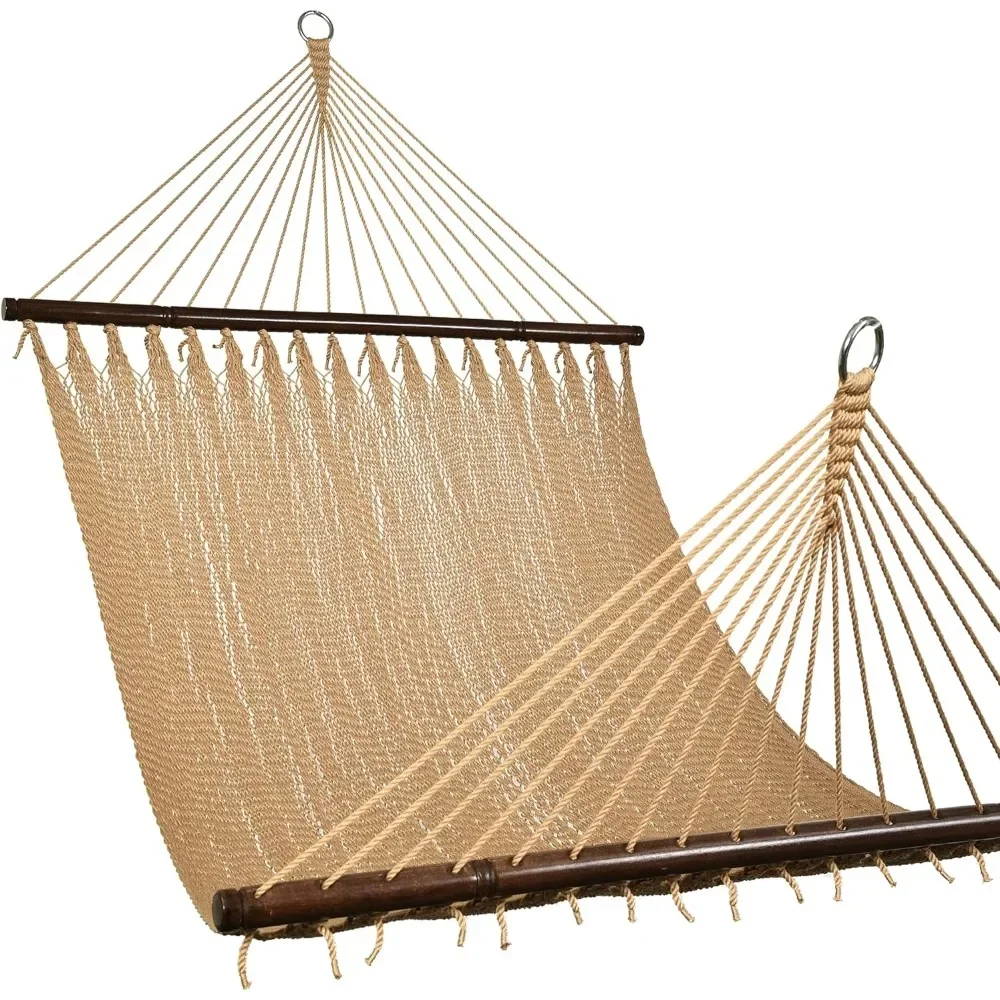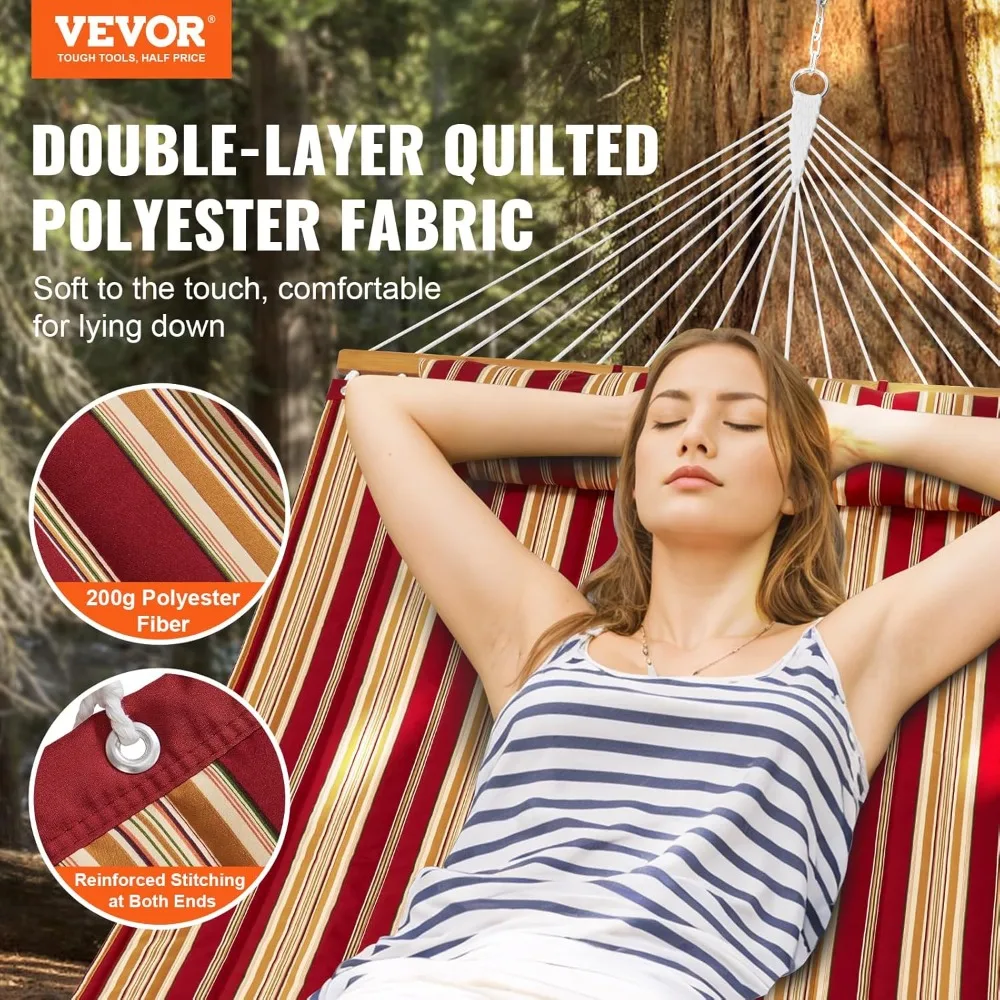Hammocks are often synonymous with relaxation, and a well-chosen hardwood hammock can be the centerpiece of a beautiful backyard oasis. Not only do they offer a unique way to lounge in nature, but they also serve as an aesthetic enhancement to outdoor spaces. However, choosing the right hardwood hammock requires consideration of several factors, including comfort, style, durability, sizing, and maintenance. Let’s dive deeper into each aspect of selecting that perfect blend of comfort and style in your backyard hammock.
Understanding Different Types of Hammocks
Before diving headlong into the selection of a hardwood hammock, it’s important to understand the variety of hammocks available in the marketplace. Haddoks come in various types, styles, and materials—each serving a different aesthetic and comfort purpose. The two primary genres are spreader bar hammocks and non-spreader bar hammocks.
Spreader bar hammocks feature a rod on each end that helps to keep the fabric taut and opens up the hammock, allowing users to easily sit down and get in. These are great for casual lounging and are often marketed as more stylish options since they resemble a suspended chair. However, they can lack the cocoon-like comfort of their counterparts. Non-spreader bar hammocks, on the other hand, envelop the body more fully, providing a snug and cozy feel—ideal for those who want to immerse themselves in relaxation.
Moreover, you may also come across different shapes and configurations, like Brazilian or Mayan hammocks, which are traditionally woven and provide a stronger, more flexible hold. Understanding these fundamental differences will aid in narrowing down your choices and help you find a hammock that complements both your lifestyle and personal taste.

The Importance of Material: Why Go for Hardwood?
When it comes to selecting a hardwood hammock, it’s vital to understand the intrinsic benefits of hardwood as a material. Hardwood hammocks, unlike their fabric or synthetic counterparts, exude durability and a classic aesthetic that complements various outdoor settings. The most common hardwoods used for hammock construction are teak, oak, and mahogany. These types of wood are not only resistant to weather elements but also boast natural beauty with rich colors and textures that can elevate your backyard’s décor.
One of the most significant advantages of hardwood is its superior strength and resilience. Unlike softwood, which can warp, splinter, or deteriorate with exposure to the elements, hardwood can withstand the test of time. This will ensure that your investment yields lasting comfort and style for seasons to come. It’s also worth mentioning that quality hardwood is usually treated with protective finishes that resist moisture and UV fade, ensuring that your hammock retains its luster even after prolonged outdoor use.
Evaluating Comfort: What to Look For
Even the most stylish hammock will prove useless if it lacks comfort. Choosing the right verification features in a hardwood hammock goes beyond merely selecting the wood type; you must consider factors such as fabric choice, cushioning, and design.
A key feature to look out for is the hammock’s weight capacity. Most hardwood hammocks can support a substantial amount of weight, but it’s essential to verify the specifics to ensure safety during use. Additionally, hammock size can greatly affect comfort. If two people intend to share the hammock, choosing an extra-large option may prove more enjoyable.
Comfort is also significantly affected by the hammock’s fabric. Many hardwood hammocks come with fabric options like cotton or weather-resistant synthetic blends. Cotton offers breathability and comfort, especially in warm weather, while synthetic options are usually easier to clean and maintain. Consider your local climate when making this choice.
Dimensions and Aesthetics: Finding the Right Fit
When selecting the perfect hammock, dimensions play a crucial role not only in ensuring comfort but also in enhancing your backyard’s aesthetic appeal. Firstly, consider where you plan to install your hammock. Measure your available yard space carefully, taking into account height, width, and even surrounding elements such as trees, decks, or other furniture.
Standard-sized hammocks typically range from 9 to 14 feet in length. If you intend to hang your hammock between two trees, ensure you also measure the distance between them to avoid mismatched sizing. In cases where trees aren’t available, you might want to consider purchasing a stand. Stands come in various styles and sizes to accommodate various hammock lengths.
Beyond functional dimensions, the aesthetic aspect should not be downplayed. Given the variety of woods and finishes available, choose something that complements your outdoor décor. Whether you prefer a more rustic, natural look or something modern and polished, there’s a design to match your vision. Some hammocks come with cushions or pillows, giving you options to introduce color and texture. Choose pieces that meld well with existing outdoor furniture for a coordinated feel.

Maintenance: Ensuring Longevity
Once you’ve made your selection, it’s crucial to understand how to properly maintain your hardwood hammock to ensure that it lasts for years to come. Unlike synthetic materials, hardwood requires more attentive care, particularly if you live in areas where weather conditions fluctuate.
First and foremost, clean your hammock regularly. A simple mixture of mild soap and water can help remove dirt and grime that can collect over time. Make sure to use a soft sponge or cloth to avoid scratching the wood. After cleaning, thoroughly rinse and dry to avoid moisture accumulation, which can lead to rotting or mold.
In addition, regular oiling is recommended to keep the wood looking fresh and to protect it from the elements. Many people use teak oil or a similar wood protective oil. This not only helps maintain the natural luster of the wood but also provides a barrier against moisture and UV damage. Be sure to apply the oil in moderation to avoid a sticky residue.
Location and Installation: Setting Up for Success
Choosing the ideal location for your hardwood hammock is as vital as the hammock itself. The perfect spot should offer an inviting ambiance while providing safety and convenience. Ideally, look for shaded areas that can keep you cool during hot summers. However, ensure that sunlight is still able to peek through to avoid a damp environment as the humidity can breed mold.
Once you’ve identified the right location, you might want to consider hanging your hammock between two trees. This natural setup is an attractive and timeless option. However, it’s crucial to ensure that your chosen trees are sturdy and healthy. Inspect for rot and weakness, as a fallen limb could spell disaster.
If trees are unavailable, or for those who prefer a more flexible option, a hammock stand is a viable alternative. A stand can be moved depending on your changing needs and can also be an excellent way to avoid damaging landscaping. The installation process is straightforward; most stands require minimal assembly and provide adjustable height, allowing customization based on personal preference.
Personal Touch: Adding Accessories
Once you’ve installed your hardwood hammock, it’s time to accessorize! Accessories can not only enhance comfort but also add a personal flair to your outdoor sanctuary. Start with functional items such as cushions and pillows, which can make your hammock feel cozy while also allowing for personal expression through various colors and patterns.
Outdoor throws are another brilliant idea. Not only do they provide an element of warmth during cooler months, but they also add layers and texture to the hammock. Choose colors that can either complement or contrast with the natural wood tones for a dynamic look.
Moreover, consider adding a small side table to your outdoor hammock setup, offering a convenient space for drinks, books, or any other essentials. Lanterns, string lights, or candles can also create a magical ambiance as you enjoy evening relaxation in your backyard.

Final Thoughts: Make It Your Own
Ultimately, choosing the right hardwood hammock is about creating a perfect blend of comfort and style that adds value to your backyard. By carefully considering the type of hammock, material, design, and maintenance needed, you will set the stage for countless hours of relaxation, enjoying the great outdoors right from your home.
Remember, your backyard is an extension of your living space; it should reflect who you are and provide a haven for relaxation. Whatever style you choose—be it modern, rustic, or something uniquely yours— your hardwood hammock will serve as an invitation for both leisure and enjoyable gatherings with family and friends.
